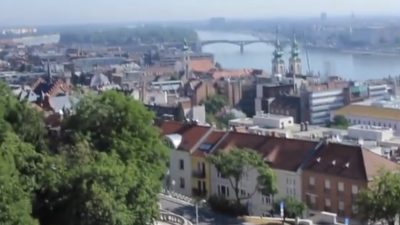Austria, Czechia, Hungary, and Slovakia to ease border restrictions: Covid-19 success
Sawako Utsumi and Lee Jay Walker
Modern Tokyo Times

The governments of Austria, Czechia, Hungary, and Slovakia hope to ease border areas by the middle of June. This is based on containing the coronavirus (Covid-19) crisis with respective success.
Currently deaths per million are Austria 71, Hungary 51, Czechia 29, and Slovakia 5 in these Central European nations. In comparison the deaths per million are Belgium 804, Spain 615, Italy 542, and the United Kingdom 542. Of course, it is a crude way to measure but it highlights the enormous gap in severity.
Foreign ministers from the mentioned Central European nations held an important videoconference to discuss the lifting of border restrictions. Equally, trans-border areas rely on open economic trade and connectivity. Therefore, the need to return to economic activity is essential.
Austria is the second most important trading partner for Hungary. Similarly, Slovakia is the third most important. Obviously, for Slovakia and other nations all have respective importance. This equally includes cultural, historical, political, and transportation links that make Central Europe tick to the common European home.
Péter Szijjártó, the Minister of Foreign Affairs and Trade in Hungary, uttered, “We are talking about four countries that are closely dependent on each other within Central Europe.”

Confidence in the fight against coronavirus is high in Central Europe. Hence, Adam Vojtěch, the Health Minister of Czechia, uttered, “the Covid-19 crisis is behind us”
Prime Minister Igor Matovič of Slovakia by early May was more than satisfied with the fight against coronavirus. This, like other Central European nations, was based on an early shutdown, pre-emptive measures, closing border areas, utilizing face masks to keep infections down, and an array of other positive measures.
Matovič said, “We have been successful above expectations (in containing the virus)…but we still must remain very careful.”
Various regional blocks and formats exist that also incorporate Poland. This applies to the Visegrad Group of Czechia, Hungary, Poland, and Slovakia. Meanwhile, the Austerlitz format (Slavkov trilateral) is loose cooperation between Austria, Czechia, and Slovakia. Similarly, Hungary and Serbia relations are extremely cordial, and political elites in Budapest assist the Hungarian community in Vojvodina in Serbia. Therefore, the interconnectivity angle is extremely important and overlaps with other nations.
Accordingly, Austria, Czechia, Hungary, and Slovakia hope to reintroduce free movement between all four nations. Of course, the monitoring of coronavirus will continue and caution remains important. However, if the conditions follow the favorable recent weeks in the fight against coronavirus then the middle of June is being targeted.
Péter Szijjártó said, “The parties have in theory designated 15 June as a target date for enabling citizens from all four countries to move freely between each other’s countries.”
Overall, the Central European nations are now focused on the next stage in the fight against coronavirus. This relates to kick-starting the economy, opening borders, and reassuring the citizens of Austria, Czechia, Hungary, and Slovakia that the worse is over. Therefore, it is hoped that a return to normality will follow along with new economic innovations that will boost the entire region.

PLEASE DONATE TO HELP MODERN TOKYO TIMES
Modern Tokyo News is part of the Modern Tokyo Times group
DONATIONS to SUPPORT MODERN TOKYO TIMES – please pay PayPal and DONATE to sawakoart@gmail.com
http://moderntokyotimes.com Modern Tokyo Times – International News and Japan News
https://www.pinterest.co.uk/moderntokyotimes/ Modern Tokyo Times is now on PINTEREST
http://sawakoart.com – Sawako Utsumi personal website and Modern Tokyo Times artist
https://moderntokyonews.com Modern Tokyo News – Tokyo News and International News
PLEASE JOIN ON TWITTER
https://twitter.com/MTT_News Modern Tokyo Times
PLEASE JOIN ON FACEBOOK
https://www.facebook.com/moderntokyotimes